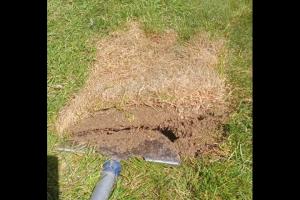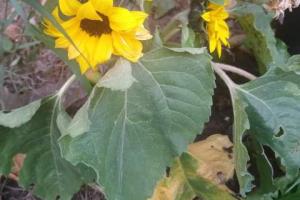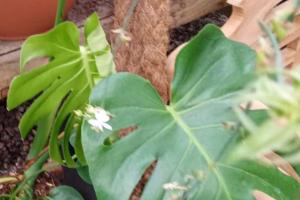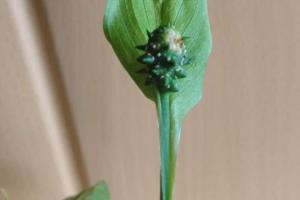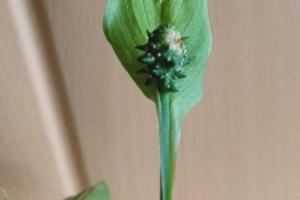Money Tree Care: A Beginners Guide to Growing Money Trees
Money trees (Pachira aquatica) also known as Guiana chestnut are one of the easiest and most elegant houseplants to grow with the glossy green leaves and braided trunks.
Money trees are native to tropical Central and South America growing under a canopy, therefore they are very capable of living at room temperature without direct sunlight and only require watering when the top inch has dried out.
Money trees are also said to bring luck and prosperity to the home!
As long as you replicate some of the conditions of the money tree’s native environment by misting to increase the humidity, planting it in well draining potting soil and locating it in bright indirect light with a temperature range of 65°F and 85°F (18°C and 29°C), then the money tree should thrive indoors.
Here is a table summarizing the care requirements of money trees:
| How to Grow Money Trees: |
Money Tree Care Requirements: |
| Location: | Locate money trees away from draughts or sources of heat. |
| Temperature: | Optimal temperature range is between 65°F and 85°F (18°C and 29°C) |
| Light: | Bright, indirect light. Direct sunlight scorches the leaves. |
| Watering: | Only water when the top inch of soil is drying out. Typically Water thoroughly every 7 days in Spring and Summer and every 10-14 days in Winter. |
| Humidity: | Money trees need a constant source of humidity from misting, the use of a humidifier or place the pot on a damp tray of pebbles to counteract dry air. |
| Repotting: | Repot money trees every 2-3 years. |
| Best Pots: | Terracotta and clay pots are best as they are porous and dry out more evenly. Always use a pot with a drainage hole in the base. |
| Best Soil Mix: | Use a mix of 70% potting soil and 30% orchid pine bark based potting mix for an optimal balance of moisture and drainage. |
| Fertilizer: | Use a general, all purpose fertilizer at half strength in the Spring and Summer. Money trees do not need fertilizer in the Winter as the plant is dormant. |
| Pruning: | Pruning is not a necessity but you can prune the money tree to a desired shape in Spring. |
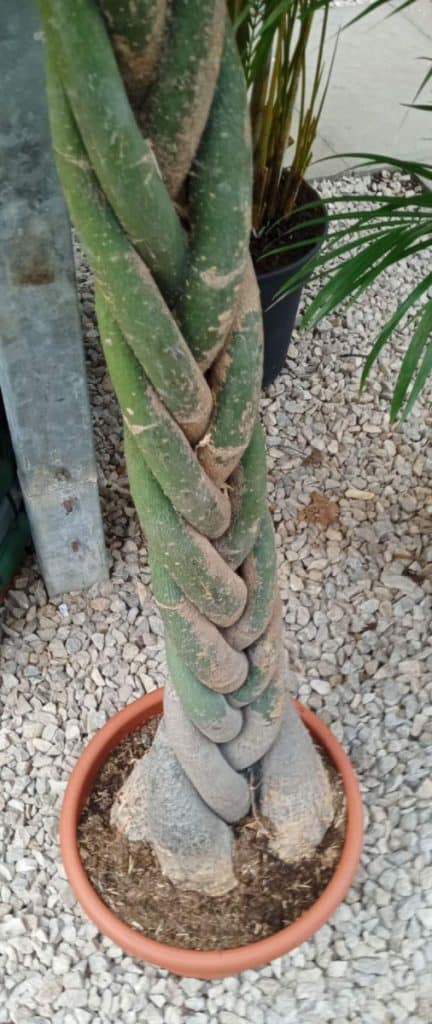
Where Should I Place My Money Tree?
Money trees are sensitive to temperature fluctuations which can result in the leaves dropping off, so always locate your money tree on the other side of the room from any sources of indoor heat and out of the direct path of air conditioning or forced air as this can dry out the leaves and turn them brown.
Money trees are native to warm tropical climates so room temperatures are optimal for a money tree to thrive with the best temperature range for money trees being between 65°F and 85°F (18°C and 29°C).
Cooler temperatures then 55°F (12°C) are likely to result in yellowing leaves that drop off.
How Much Light Does a Money Tree Need?
Money trees grow best in bright indirect light or filtered light, however they can tolerate some shade and still grow.
I personally grow money plants in a room with a South facing window which has plenty of light but ensure the leaves are not in any direct sunlight as this can scorch the leaves brown.
Whilst money trees can grow up to 60 feet in their native environment the money trees that are grown as houseplant and juvenile specimens and they would be sheltered from direct sunlight by the forest canopy overhead.
Money trees are adaptable and can grow under fluorescent bulbs or grow lights if you do not have space in a South facing room.
In too much shade the money tree grows more slowly and the leaves appear less glossy and healthy then the should.
I recommend rotating your money 90 degrees every time you water it to ensure even growth and an attractive appearance.
How Often to Water Money Trees
Generally it is best practice to water money trees once every 7 days. Money trees need the top inch of their potting soil to dry slightly between each bout of watering generously so that the soil is evenly moist.
Money tree leaves start to turn yellow drop off if the soil drys out completely and can develop root rot if the soil is constantly saturated, which is why it is important to allow the top inch of soil to dry before watering as this achieves the optimal balance of moisture.
Water the money tree to the extent that excess water trickles from the drainage holes in the base of the pot.
Allow the dish or saucer underneath your money tree’s pot to fill with water and leave it for 20 minutes or so to allow the soil to draw up any moisture.
I find the is the best method to ensure the soil is evenly moist. However I must emphasize it is important to empty any excess water from trays or saucers underneath your pot as the money tree does not tolerate consistently saturated soil.
How Often to Water Money Trees in Winter
It is important to reduce how often you water money trees in Winter to one good soak every 10-14 days. The money tree’s potting soil usually dries out more slowly in Winter as their are fewer hours of sunlight, causing the money tree to grow more slowly and for the roots to draw up less moisture from the soil.
However it should be noted that because of indoor heating the temperature at night can increase indoors which can dry out the money tree’s potting soil quickly, therefore I recommend using your finger to test the soil to detect when the top inch of the soil dries and water accordingly.
In my experience it is better to use your finger to tell when the soil is dry rather then water meters as I have found these devices less accurate then just feeling the soil for yourself.
Mist the Leaves Every 2-3 days to Increase Humidity
Typically, money tree leaves should be misted every 3 days or so indoors to counteract the dry air from air conditioning and indoor heating.
You can also use a humidifier to place the pot on a damp tray of pebbles for constant humidity.
Money trees are native to the humid tropical forests of Central and South America, therefore it is important to create a humid micro climate around the leaves of the plant to mimic the conditions of its humid natural habitat.
However, in my experience money trees are more adaptable to the lower levels of humidity indoors then most tropical plants and most problems occur in Winter because of the use of indoor heating which dries out the air and turns the leaves brown and crispy, hence the importance of misting the leaves at this time of year.
In particularly arid climates such as Southern California, the money trees can suffer and it is better to use a humidifier for constant higher humidity.
How Often to Repot Money Trees
Money trees need repotting every 2-3 years on average.
The best time of year to repot a money tree is in the Spring as this is when the plant is at its most resilient to the stress of transplanting, however they can be successfully repotted in Summer but avoid repotting in the Fall or Winter when the plant is dormant.
Repot the money tree into a pot that is only 2-3 inches larger in diameter then the previous pot to avoid over potting (which causes the the soil to retain too much moisture around the roots for the money tree to tolerate).
Repot your money tree into the the potting mix as quickly as you can whilst trying to disturb the roots as little as possible to avoid any unnecessary stress.
Give the potting soil a good soak after repotting and mist the leaves diligently for the next few weeks to reduce water loss whilst the roots adjust to their new environment.
If your money tree does drop its leaves after repotting then they should regrow again in the following weeks, which is why it is best to repot in the Spring whilst the money tree is in active growth.
Best Pots for Money Trees
My personal favourite pots for money trees are terracotta or unglazed clay pots as they are porous which allows the potting soil to dry more evenly which prevents root rot.
Choose a pot with a drainage hole in the base to allow excess water to drain away efficiently.
Always choose a pot that is proportional to the size of the money as small pots dry out too quickly and excessively large pots dry out too slowly for the plant to tolerate.
Whist I have had most success growing money trees in terracotta and clay pots, it doesn’t make a huge difference (as long as you have a good well draining potting medium) and you can grow money trees in ceramic pots if desired.
Best Soil Mix for Money Trees
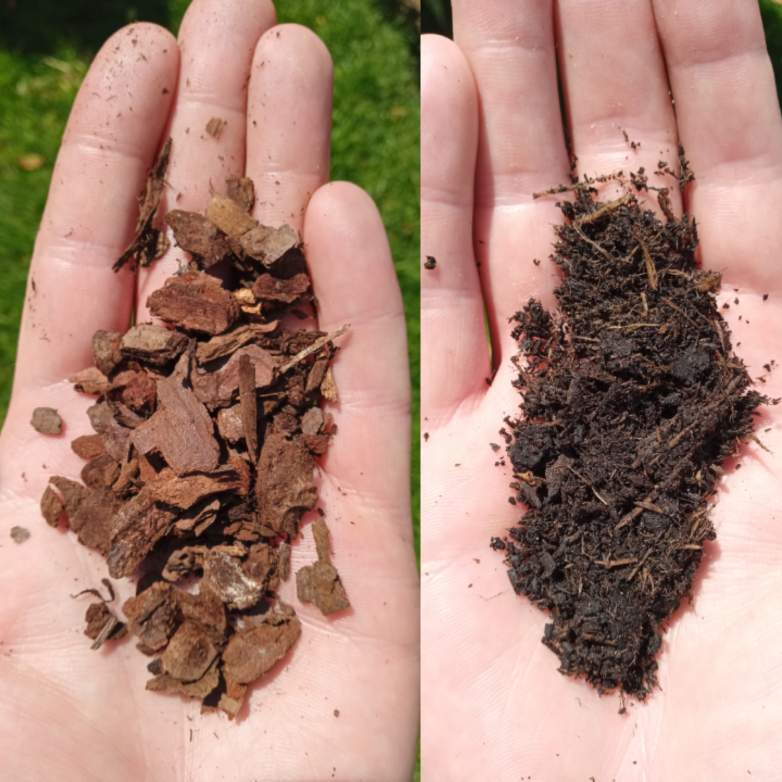
The best soil mix for money trees is a mix of approximately 70% potting soil to 30% pine bark based orchid potting mix. This potting soil has the balance of retaining enough moisture to sustain the money tree and allowing for good drainage to avoid root rot.
You can also use perlite or horticultural grit rather then orchid potting mix.
It is essential to amend the potting soil before planting or repotting money trees as ordinary potting soil retains too much moisture for the tolerate and can increase the risk of root rot and fungal disease.
The reason why pine bark chips are so good for money trees is that they have a large particle size which creates a porous, aerated soil structure to allow oxygen to reach the roots for root respiration and to allow excess water to drain away so that the potting mix does not become saturated.
This replicates the preferred soil conditions of the money tree’s native environment.
How and When to use Fertilizer
Feed money trees once every 2 weeks with a general, all purpose houseplant fertilizer at half strength throughout Spring and Summer to support healthy growth.
Do not use fertilizer in the Fall or Winter and do not feed more frequently then once every 2 weeks or use more then half strength fertilizer as this can burn the money tree’s roots and cause excess salts to accumulate around the roots.
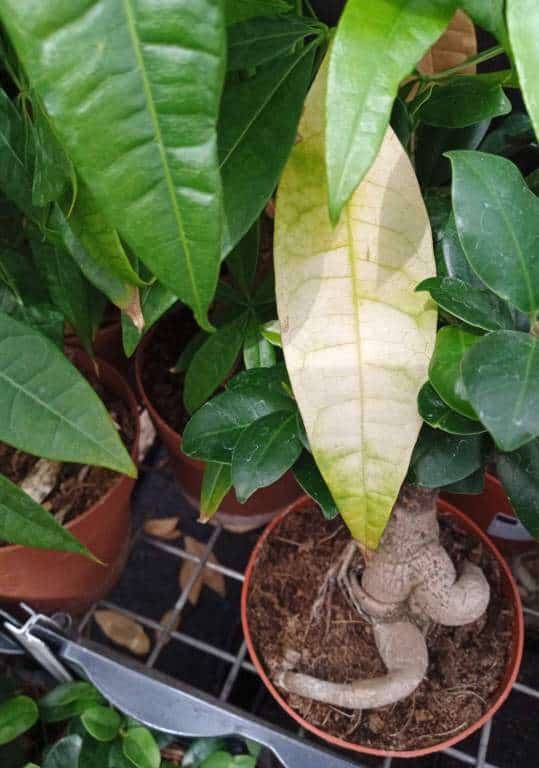
If you use too much fertilizer, the leaves can turn yellow, in which case read my article, How to Save A Money Tree with Yellow Leaves.
Do Money Trees Need Pruning?
Money plants typically do not require any pruning at all as there growth is usually far more modest when grown indoors.
However if you have a money tree that has grown too big for the space in your house then use a sharp pair of pruners to shape the tree to the desired size in the Spring.
Sometimes branches can die back in which case you can just cut them back to healthy growth at any time of year




